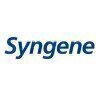
i
Aragen Life
Sciences
Filter interviews by
Aragen Life Sciences Senior Research Associate Interview Questions and Answers
7 Interview questions
The LCMS pattern of the chloro compound typically shows a peak corresponding to the molecular ion with a mass shift due to the chlorine isotope.
LCMS analysis of chloro compounds often shows a peak corresponding to the molecular ion (M+) with a mass shift due to the presence of chlorine isotopes.
The presence of chlorine atoms in the compound leads to characteristic isotope patterns in the LCMS spectrum.
The isotopic...
The product and partially consumed starting material can be separated in an ester hydrolysis reaction by using techniques such as distillation, extraction, or chromatography.
Distillation can be used to separate the product and starting material based on their different boiling points.
Extraction involves using a solvent to selectively extract one component from the mixture.
Chromatography techniques such as column c...
Cis and trans isomers can be differentiated using proton NMR spectroscopy based on chemical shift values and coupling constants.
Cis isomers typically have similar chemical shift values for protons on the same carbon atom, while trans isomers have different chemical shift values.
Cis isomers exhibit larger coupling constants between protons on adjacent carbon atoms compared to trans isomers.
Analysis of the splitting...
Quenching a small batch Pd-C reaction involves adding a quenching agent to stop the reaction and isolate the desired product.
Add a quenching agent such as water or acid to the reaction mixture
Stir the mixture to ensure thorough quenching
Monitor the reaction to determine the appropriate time for quenching
Isolate the desired product after quenching
A NOE (Nuclear Overhauser Effect) is a phenomenon in NMR spectroscopy where the nuclear spins of two atoms interact with each other.
NOE occurs when the nuclear spins of two atoms are coupled through space, leading to changes in their relaxation rates.
It is used in NMR spectroscopy to determine the distance between atoms in a molecule.
An example of NOE is the observation of enhanced signal intensity between protons...
LAH reduction workup involves quenching with water, acid-base extraction, and purification steps.
Quench LAH with water to destroy excess reagent and generate aluminum hydroxide
Perform acid-base extraction to separate the organic product from byproducts
Purify the organic product using techniques like distillation or chromatography
Degas palladium-catalyzed coupling reactions to remove oxygen and water, which can inhibit the reaction and reduce yield.
Removes oxygen and water which can inhibit the reaction
Improves yield and efficiency of the coupling reaction
Prevents formation of palladium oxides which are inactive catalysts
Enhances selectivity of the reaction by removing impurities
Aragen Life Sciences Senior Research Associate Interview Experiences
8 interviews found
I applied via Walk-in and was interviewed in Jul 2024. There was 1 interview round.
(7 Questions)
- Q1. What is the concept of a (NOE), and can you provide an example to illustrate it?
- Ans.
A NOE (Nuclear Overhauser Effect) is a phenomenon in NMR spectroscopy where the nuclear spins of two atoms interact with each other.
NOE occurs when the nuclear spins of two atoms are coupled through space, leading to changes in their relaxation rates.
It is used in NMR spectroscopy to determine the distance between atoms in a molecule.
An example of NOE is the observation of enhanced signal intensity between protons that...
- Q2. How can you differentiate between cis and trans isomers using proton Nuclear Magnetic Resonance (NMR) spectroscopy?
- Ans.
Cis and trans isomers can be differentiated using proton NMR spectroscopy based on chemical shift values and coupling constants.
Cis isomers typically have similar chemical shift values for protons on the same carbon atom, while trans isomers have different chemical shift values.
Cis isomers exhibit larger coupling constants between protons on adjacent carbon atoms compared to trans isomers.
Analysis of the splitting patt...
- Q3. How can both the product and the partially consumed starting material be separated in an ester hydrolysis reaction?
- Ans.
The product and partially consumed starting material can be separated in an ester hydrolysis reaction by using techniques such as distillation, extraction, or chromatography.
Distillation can be used to separate the product and starting material based on their different boiling points.
Extraction involves using a solvent to selectively extract one component from the mixture.
Chromatography techniques such as column chroma...
- Q4. What is the workup procedure for LAH (Lithium Aluminum Hydride) reduction?
- Ans.
LAH reduction workup involves quenching with water, acid-base extraction, and purification steps.
Quench LAH with water to destroy excess reagent and generate aluminum hydroxide
Perform acid-base extraction to separate the organic product from byproducts
Purify the organic product using techniques like distillation or chromatography
- Q5. How do you quench a small batch palladium-carbon (Pd-C) reaction?
- Ans.
Quenching a small batch Pd-C reaction involves adding a quenching agent to stop the reaction and isolate the desired product.
Add a quenching agent such as water or acid to the reaction mixture
Stir the mixture to ensure thorough quenching
Monitor the reaction to determine the appropriate time for quenching
Isolate the desired product after quenching
- Q6. Why is it necessary to degas palladium-catalyzed coupling reactions?
- Ans.
Degas palladium-catalyzed coupling reactions to remove oxygen and water, which can inhibit the reaction and reduce yield.
Removes oxygen and water which can inhibit the reaction
Improves yield and efficiency of the coupling reaction
Prevents formation of palladium oxides which are inactive catalysts
Enhances selectivity of the reaction by removing impurities
- Q7. What is the LCMS pattern of the chloro compound, and what is the reason for its appearance?
- Ans.
The LCMS pattern of the chloro compound typically shows a peak corresponding to the molecular ion with a mass shift due to the chlorine isotope.
LCMS analysis of chloro compounds often shows a peak corresponding to the molecular ion (M+) with a mass shift due to the presence of chlorine isotopes.
The presence of chlorine atoms in the compound leads to characteristic isotope patterns in the LCMS spectrum.
The isotopic patt...
Interview Preparation Tips
I appeared for an interview before Jan 2024.
(2 Questions)
- Q1. Self Introduction
- Q2. Reaction conversion
Interview Preparation Tips
I applied via Walk-in and was interviewed in Jun 2022. There were 3 interview rounds.

(2 Questions)
- Q1. Tell me about yourself. What are your technical skills? Conversions of aromatic compounds. What types of Organometallic reactions have you handled? Give examples in conditions you have performed. How to pu...
- Ans.
Experienced in organometallic chemistry, NMR analysis, and purification techniques for aromatic compounds.
Handled organometallic reactions like Suzuki coupling and Stille coupling under inert atmosphere.
Degassing is crucial to remove oxygen and moisture, preventing side reactions.
Oxidative addition involves a metal complex forming a new bond with a substrate, while reductive addition is the reverse process.
Worked with ...
- Q2. Why should I hire you?
(1 Question)
- Q1. Tell me about youself. What is your current organization?How many years you are working there? Why are you looking for job change? Tell me about your family.
Interview Preparation Tips
I applied via Walk-in and was interviewed in Nov 2021. There were 4 interview rounds.
Interview Questionnaire
6 Questions
- Q1. CN ir value, alkene 1H Nmr value, swern oxidation, coloumn purification time, route of synthesis, final reports of finished product, LNB, safety, etc.
- Q2. Be polite and cool while attend the interview
- Q3. U can say exactly what they are asking
- Q4. Do not go with your requirement
- Q5. But u can show enthusiasm
- Q6. You have to show intrest
Interview Preparation Tips
I applied via Walk-in and was interviewed before Mar 2023. There were 2 interview rounds.
(1 Question)
- Q1. Self data and resume and work experience.
(1 Question)
- Q1. Current salary and expected salary.
Interview Preparation Tips
I applied via LinkedIn and was interviewed before Aug 2022. There were 3 interview rounds.

(1 Question)
- Q1. Work related questions
- Ans.
I have several questions regarding the team's dynamics, project expectations, and opportunities for professional growth.
What are the primary goals for the research team in the upcoming year?
Can you describe the typical projects I would be working on?
How does the team collaborate on research initiatives?
What opportunities are there for professional development and training?
How is success measured for a Senior Research A...
(1 Question)
- Q1. Personality check
Interview Questionnaire
2 Questions
- Q1. What about working in previous organization.
- Ans.
My previous organization provided a collaborative environment that fostered innovation and professional growth.
Collaborative projects: Worked on a multi-disciplinary team to develop a new research methodology that improved data accuracy by 20%.
Professional development: Attended workshops and conferences that enhanced my skills in data analysis and research techniques.
Mentorship: Actively participated in mentoring junio...
- Q2. FT and PO others..
I applied via Walk-in and was interviewed in May 2019. There were 3 interview rounds.
Interview Questionnaire
6 Questions
- Q1. Basic chemistry
- Q2. Coupling reactions
- Q3. Anyalytical ,
- Q4. Spectroscopy like IR ,NMR,UV and mass
- Q5. Conversation
- Q6. Oxidation reaction etc
Interview Preparation Tips
Top trending discussions






Interview questions from similar companies

Senior Research Associate Interview Questions & Answers
SAI Life Sciencesposted on 4 Nov 2021
I applied via Recruitment Consultant and was interviewed before Nov 2020. There were 5 interview rounds.
Interview Questionnaire
1 Question
- Q1. All questions regarding my previous projects and troubleshooting techniques
Interview Preparation Tips

Senior Research Associate Interview Questions & Answers
Syngene Internationalposted on 23 Oct 2021
I applied via Referral and was interviewed before Oct 2020. There were 4 interview rounds.
Interview Questionnaire
1 Question
- Q1. About distillation.
Interview Preparation Tips
Aragen Life Sciences Interview FAQs
Some of the top questions asked at the Aragen Life Sciences Senior Research Associate interview -
Tell us how to improve this page.
Aragen Life Sciences Interviews By Designations
- Aragen Life Sciences Research Associate Interview Questions
- Aragen Life Sciences Associate Scientist Interview Questions
- Aragen Life Sciences Senior Research Associate Interview Questions
- Aragen Life Sciences Research and Development Interview Questions
- Aragen Life Sciences Deputy Manager Interview Questions
- Aragen Life Sciences R&D Chemist Interview Questions
- Aragen Life Sciences Junior Research Associate Interview Questions
- Aragen Life Sciences Chemist Interview Questions
- Show more
Interview Questions for Popular Designations
- Senior Software Engineer Interview Questions
- Associate Interview Questions
- Senior Executive Interview Questions
- Research Associate Interview Questions
- Research Analyst Interview Questions
- Senior Design Engineer Interview Questions
- Clinical Research Coordinator Interview Questions
- Research Scientist Interview Questions
- Show more
Overall Interview Experience Rating
based on 7 interview experiences
Difficulty level
Duration
Interview Questions from Similar Companies
Aragen Life Sciences Senior Research Associate Reviews and Ratings
based on 192 reviews
Rating in categories
|
Research Associate
1.5k
salaries
| ₹2.5 L/yr - ₹6.8 L/yr |
|
Senior Research Associate
945
salaries
| ₹4.2 L/yr - ₹9.5 L/yr |
|
Associate Scientist
462
salaries
| ₹6.5 L/yr - ₹12 L/yr |
|
Senior Executive
338
salaries
| ₹4 L/yr - ₹9 L/yr |
|
Executive
250
salaries
| ₹2.5 L/yr - ₹6 L/yr |

IQVIA

Syngene International

SGS

SAI Life Sciences
- Home >
- Interviews >
- Aragen Life Sciences Interview Questions















